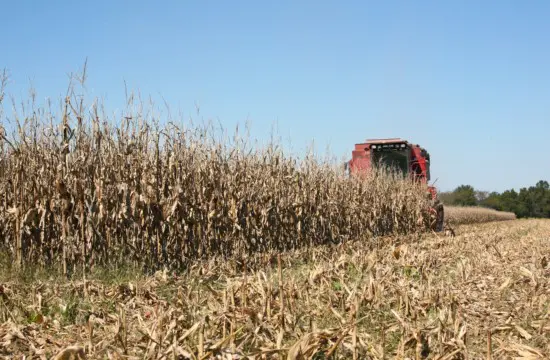These days, return-on-investment (ROI) scrutiny applies to just about every product and practice you might choose to throw at your corn and soybeans in an attempt to maintain profitable yields while simultaneously trimming production costs.
But Mike Wilson of Wabash Valley Service Company in Allendale, Illinois, says, in reality, it’s your choice of a comprehensive nutrient management program that offers the greatest potential to increase ROI.
“Farmers should pay close attention to the interaction of nutrients in the soil and in the crop – just because soil tests may indicate high levels of nitrogen or phosphorus, that doesn’t mean that the plants are taking those nutrients up and using them to make grain,” Wilson says.
Make the Ratio Work
Wilson adds that spending, say, an extra $20 per acre on applying additional nitrogen is often not the answer.
“It may well be the case that spending $3 on a sulfur application will do the trick to ensure improved plant uptake of the nitrogen. You can increase your fertilizer investment ROI simply by taking steps to improve nutrient uptake.”
He also feels strongly that today’s farm economy demands the ROI offered by most production inputs should be 2:1.
“Ideally, the ROI should be 3:1 to compensate for the intangibles a farmer can’t control, such as environmental stresses and commodity market fluctuations,” he stresses.
Recipe for Success
Tom Marks farms 2,200 acres of corn and soybeans across Edwards, Wayne and Richland Counties in Illinois with his father, Ray, and son, Randall. Like Wilson, he feels that the greatest opportunity for increasing ROI lies with a combination of nutrient management programs, variable rate technology (VRT) and grid sampling.
“We’ve used variable rate technology for our fertilizer applications since the 1990s,” Marks explains. “This practice alone has helped us maintain or increase corn and soybean yields, reduced our production costs and provided some environmental stewardship benefits, such as reducing nutrient run-off.”
Marks is also using three-acre grid sampling to track both soil fertility and pH levels.
“Keeping the pH where we want it – we’re really getting very accurate at doing this,” he says. “It can make quite a difference when it comes to increasing nutrient availability of nitrogen, phosphorus and potash.”
Partnership Value
John Haase, who grows 3,200 acres of corn and soybeans in Wabash County, Illinois. He keeps a close eye and a sharp pencil on the ROI potential for different crop inputs.
“I like to deal with one supplier and take advantage of quantity, prepay and early order discounts,” Haase says. “That said, having a good working relationship with my supplier is also important – good service has a lot of value, and the cheapest approach does not always provide the best value.”
Haase also favors an ROI ratio of closer to 3:1 to effectively manage the many variables that he can’t control, such as grain markets, weather and unanticipated pressure from insects and diseases.
Haase feels that it is a farmer’s responsibility to ride herd on ROI considerations when selecting crop inputs. But, his agricultural retailer is a big part of the equation and shares some ROI responsibilities as well.
“I have a supplier who wants me to be successful with my farming operation. You just can’t put a value on that type of partnership.”

